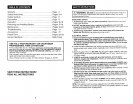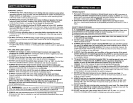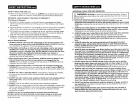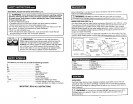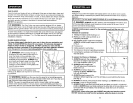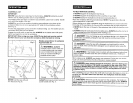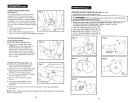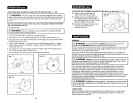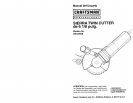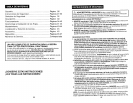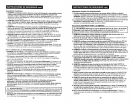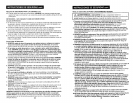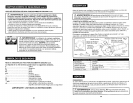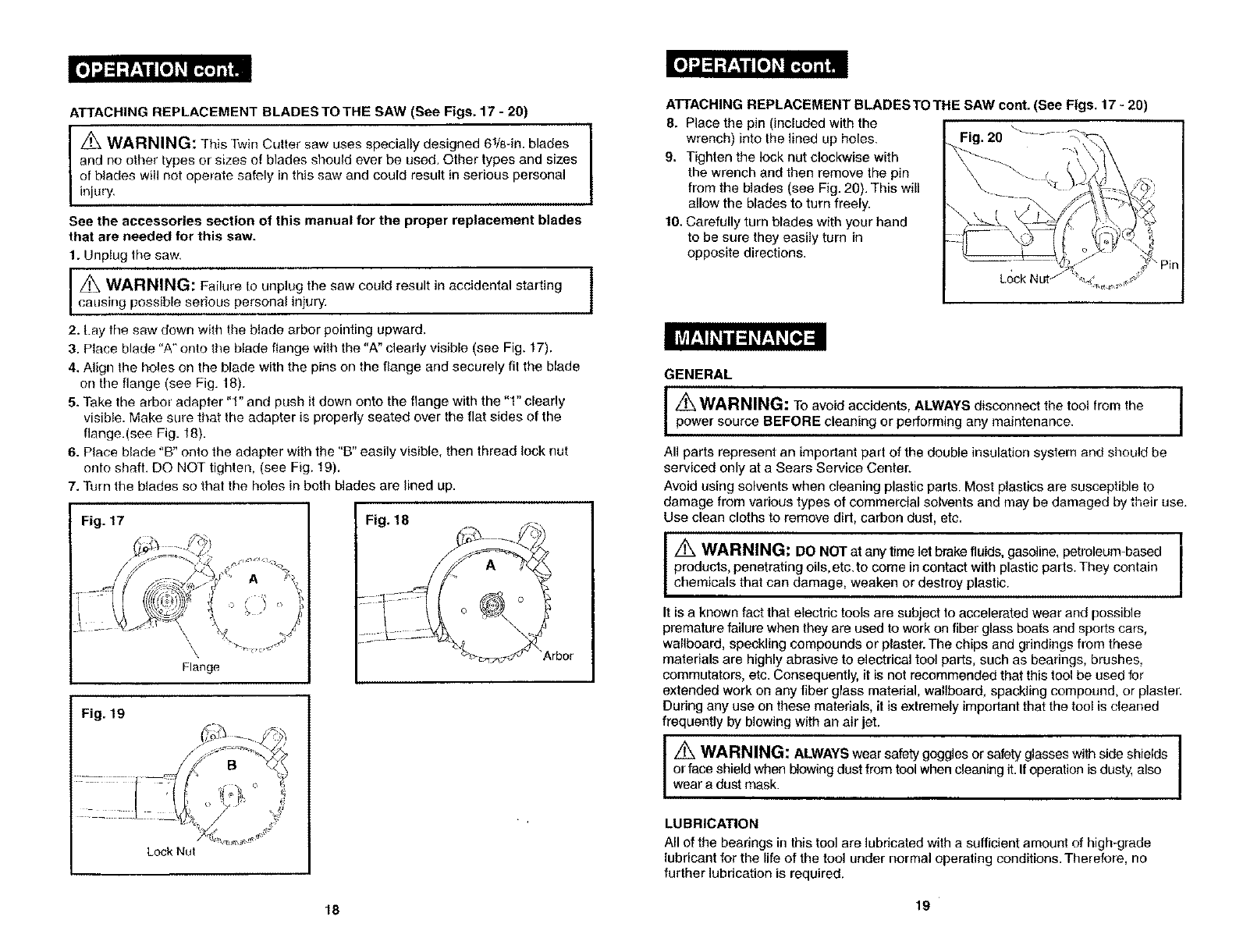
ATTACHING REPLACEMENT BLADESTOTHE SAW (See Figs. 17 - 20)
Z_ WARNING: This f_virr Cutter saw uses specially designed 61/s-in. blades
and no ether types or sizes of blades should ever be used. Other types and sizes
of blades will not operate safely in this saw and could result in serious personal
injury
See the accessories section of this manual for the proper replacement blades
that are needed for this saw.
1. Unplug lhe saw,
WARNING: Failure to unplug the saw could result in accidental starting
causing possible serious personal injury.
2, t.ay the saw down with the blade arbor pointing upward,
3. Place blade "A" onto the blade flange with the "PCclearly visible (see Fig, 17).
4, Align the holes on the blade with the pins on the flange and securely fit the blade
on the flange (see Fig. t 8).
5, Take tile arbor' adapter "1" and push it down onto the flange with the "1" clearly
visible. Make sure that lbe adapter is properly seated over the flat sides of the
flange.(see Fig. 18).
6. Place blade "B" onto the adapter with the "B" easily visible, then thread lock nut
onto shaft, DO NOT tighten, (see Fig. 19).
7. Turn the blades so that the holes in both blades are lined up.
Fig. 17
Fig. 18
A
\
\
Flange
Fig. 19
Lock NUl
ATTACHING REPLACEMENT BLADESTOTHE SAW cont. (See Figs. 17 - 20)
8. Place the pin (included with the
wrench) into the lined up holes. Fig. 20
9. Tighten the lock nut clockwise with
the wrench and then remove the pin
from the blades (see Fig. 20). This will
allow the blades to turn freely.
10. Carefully turn blades with your hand
to be sure they easily turn in
opposite directions.
Lock Nut I
Pin
GENERAL
I ,/_ WARNING: To avoid accidents, ALWAYS disconnect the tool from thepower source BEFORE cleaning or performing any maintenance.
All parts represent an important part of the double insulation system and sllould be
serviced only at a Sears Service Center.
Avoid using solvents when cleaning plastic parts. Most pfastics are susceptible to
damage from various types of commercial solvents and may be damaged by their use.
Use clean cloths to remove dirt, carbon dust, etc.
/'N WARNING; DO NOT at any time let brake fluids, gasoline, petroleum-based
products, penetrating oils, etc. to come in contact with plastic parts. They contain
chemicals that can damage, weaken or destroy plastic.
It is a known fact that electric tools are subject to accelerated wear and possible
premature failure when they are used to work on fiber glass boats and sports cars,
wallboard, speckling compounds or plaster. The chips and grindings from these
materials are highly abrasive to electrical tool parts, such as bearings, brushes,
commutators, etc. Consequently, it is not recommended that this tool be used for
extended work on any fiber glass matedal, wallboard, spackling compound, or plaster.
During any use on these materials, it is extremely important that the tool is cleaned
frequently by blowing with an air jet.
I Z_ WARNING: ALWAYS wear safety goggles or safety glasses with side shields
or face shield when b_owingdust from tool when cleaning it. Ifoperation is dusty, also
wear a dust mask.
LUBRICATION
All of the bearings in this tool are lubricatedwith a sufficient amount of high-grade
lubricant for the life of the tool under normal operating conditions. Therefore, no
further lubrication is required.
18 19



